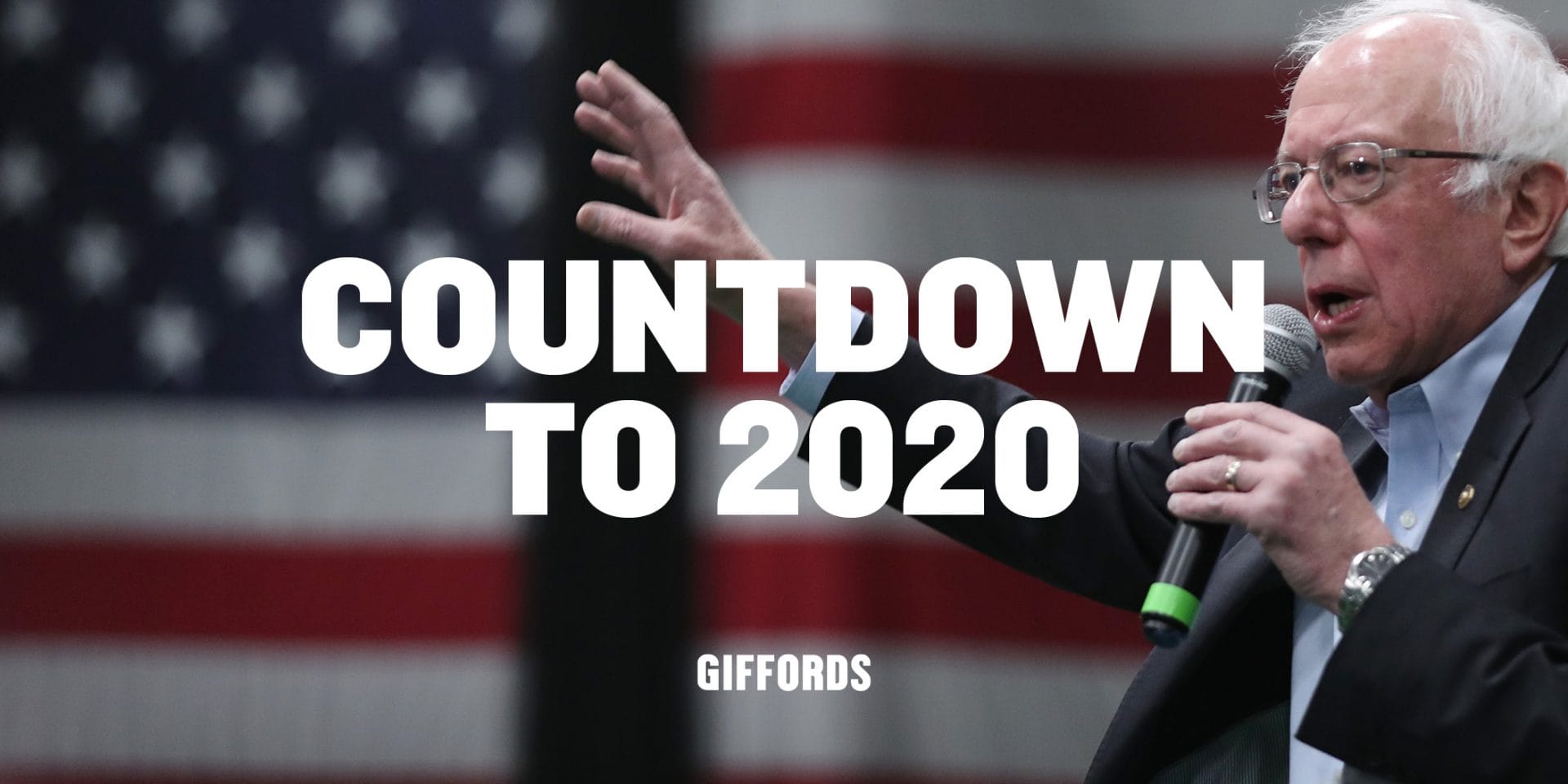
Countdown to 2020: Bernie Sanders on Gun Safety
In 2018, voters elected a wave of candidates who prioritized gun safety like never before. No longer a third rail of politics, gun violence prevention is now a top issue heading into the 2020 presidential election. In this regular series, we delve into the gun safety platforms of Democratic presidential candidates who have released initial policy plans to address this issue. While not an endorsement of any candidate or their platform, each post looks at a candidate’s record, explains their proposals, and shares our analysis.
Bernie Sanders’s Record on Gun Safety
As a legislator with decades of experience, Senator Bernie Sanders has been around for every vital moment in the gun safety debate over the past 30 years. Hailing from a state that has historically had few gun safety laws, Sanders supported an assault weapons ban in his first, ultimately unsuccessful campaign for Congress in 1988. Two years later, Sanders was elected to Congress. There, he amassed a mixed voting record on gun violence prevention measures over the next several decades.
Sanders voted yes on the 10-year assault weapons ban when it passed in 1994. But he also voted yes on the 2005 Protection of Lawful Commerce in Arms Act (PLCAA), which has provided unprecedented immunity to the gun industry over the past 15 years.
During the 2016 Democratic primary, recognizing the escalation of the country’s gun violence crisis, Sanders cosponsored legislation in the Senate to repeal PLCAA. By his 2018 Senate reelection campaign, Sanders had earned an F rating from the NRA.
Bernie Sanders’s Plan to Address Gun Violence
Although Senator Sanders has not released as comprehensive a gun safety plan as the other leading candidates seeking the Democratic nomination, his website does note several policies that would he supports to reduce gun violence. We break down a few of them below:
Regulating Assault Weapons Like Machine Guns
The gun lobby and its allies like to say that commonsense gun safety measures like universal background checks will inevitably lead to a national registry of firearm owners, which in turn will result in the confiscation of all guns. This is a nonsensical argument for several reasons, perhaps chief among them being that America has maintained a registry of fully automatic machine guns, silencers, and other particularly dangerous firearms since the passage of the National Firearms Act (NFA) in the 1930s. It has never led to anything remotely resembling the type of mass gun confiscation the gun lobby fearmongers about—but it has been successful in keeping machine guns out of the hands of dangerous people.
Bernie’s plan calls for banning the sale and distribution of assault weapons and regulating existing assault weapons under the NFA, which is a smart way to deal with the millions of assault weapons currently in circulation without calling for mandatory buybacks.
Cracking Down on Straw Purchases
When someone who is prohibited from buying guns wants to get their hands on a firearm, our weak federal gun laws provide them several options to do so. If they live in a state without universal background checks, they can purchase a gun without a background check through a private sale online or at a gun show. Alternatively, they can seek out a corrupt gun dealer who’s willing to sell firearms to unscrupulous buyers. Or they can simply ask an individual who can pass a background check to buy a gun for them, in what is known as a straw purchase. Straw purchases are a major source of guns used in crime and pose a serious threat to public safety, with data suggesting that there are more than 30,000 attempted straw purchases each year.
Although straw purchases are currently prohibited under federal law, they are often treated as minor paperwork violations. Ensuring that straw purchasing—and other forms of gun trafficking —are treated as serious and dangerous offenses will go a long way towards ensuring that guns don’t fall into the hands of criminals.
Banning the 3D-Printing of Firearms
Advancing technologies are providing new ways for dangerous people to obtain guns. In recent years, a self-described anarchist began using 3D-printing technology to create firearms and developed computer code that would allow anyone with a 3D-printer to produce a gun. 3D-printed guns pose a unique threat to public safety because they may be undetectable at security checkpoints that use metal detectors. They are also just one part of a larger, troubling trend: the spread of ghost guns, self-assembled firearms that are accessible without a background check and untraceable by law enforcement.
Currently, posting code that can be used to produce firearms with a 3D printer on the internet requires a license from the federal government. However, public safety concerns about soon-to-be-enacted changes to the license requirements and the potential proliferation of code for 3D-printed guns has prompted a lawsuit from 21 states to prevent the federal government from changing how this technical data is regulated. Sanders’s plan calls for keeping this dangerous code off the internet entirely.
Our Take
We applaud Senator Sanders for his evolution on this issue. Over his decades-long career, he has seen the politics and culture of guns shift and responded in kind. In our #GunSafetyPresident video series, Sanders talked about his growing understanding about the fear that schoolchildren in the mass shooting generation face. “Gun violence is a national crisis,” Sanders said. “We have to act in a bold way to address that crisis.”
Bernie Sanders’s updated stance reflects the urgency the American people feel to elect leaders who aren’t afraid to take on the gun lobby and achieve real progress to make us safer. Voters across the county want a president who will prioritize gun safety, and it’s important for Sanders to continue emphasizing his commitment to changing American gun laws.
Americans deserve a president committed to bold action. Let’s work together to elect a Gun Safety President this November.